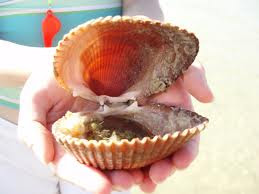•Mollusks: Seashells are generally tough exoskeletons made by mollusks however; few crustaceans of arthropod phylum like crabs even produce shells.

Even if, vision is poor in many mollusks, cephalopods like squid have eyes with retinas, lenses as well as other features wonderfully like those of vertebrates. Few gastropods have best developed sense of smell and may locate food in water at a substantial distance. Predators can similarly be noticed by chemical senses as well as sometimes eliminated by leaping. Few mollusks exhibit difficult courtship behavior.
•Gastropods: These shells from snails have a spiral shell. Slugs are gastropods however have no shells.

Sometimes, hermit crabs were discarded gastropod shells for protecting their soft bodies.
•Bivalves: Polyplacophorans are a usual kind of mollusk shell made of two shells hinged together.

Bivalve creatures include oysters, scallops and mussels. These organisms have no head, relying on species and they eat passing plankton, which floats by. Shell beach in Western Australia is nearly covered by discarded bivalve shells.
No comments:
Post a Comment